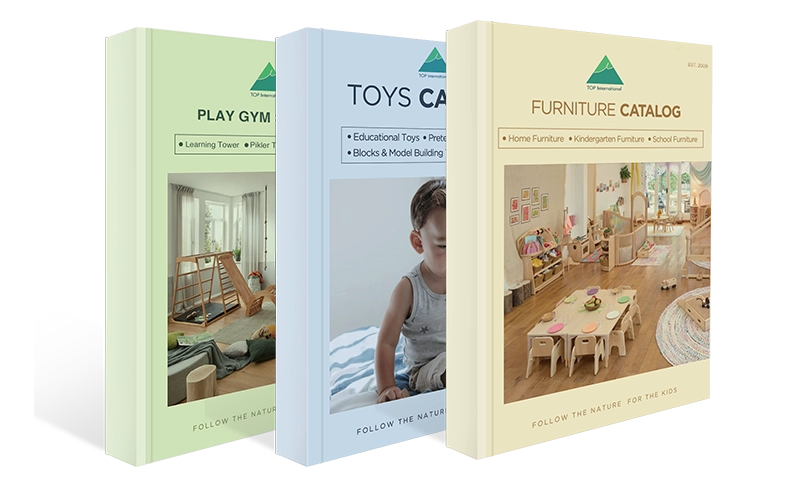Are you on a quest to find an engaging, safe indoor playground for your toddlers? Navigating the vast options of indoor playgrounds can seem like a daunting task for parents, kindergarten teachers, and daycare providers alike. How do you choose a facility that not only entertains but also contributes to the developmental milestones of children aged 0-7? With the plethora of themes, safety standards, and educational activities available, this guide aims to streamline your search process, ensuring you find a playground that perfectly aligns with the needs of young explorers and the expectations of their caretakers.
Choosing the right indoor playground is more than just about fun; it’s about fostering an environment that supports the growth, learning, and safety of our toddler children. This guide focuses on essential criteria such as age-appropriate equipment, clean and secure environments, and stimulating educational activities tailored for children in kindergartens, preschools, daycares, and nurseries. By understanding what makes a playground suitable for your kids or students, you can ensure a space that not only delights but also educates.
You are embarking on this journey to discover the ideal indoor playground for children aged 0-7, which means considering a variety of settings, from kindergartens to family living rooms, where playtime is both a learning opportunity and a source of endless joy. Whether you’re a parent seeking a weekend adventure, a kindergarten teacher planning a field trip, or a daycare professional looking to expand your facility’s play area, this guide will equip you with the knowledge to make informed decisions, ensuring that the little ones in your care are provided with the best possible environments to play, learn, and grow.

What Are Indoor Playgrounds?
Indoor playgrounds are specialized play areas designed to provide children with a safe and stimulating environment where they can play, learn, and develop various skills regardless of outdoor weather conditions. These spaces often feature a combination of play equipment and educational activities, tailored to cater to the developmental needs of children across different age groups. From soft play areas to interactive learning zones, indoor playgrounds offer a diverse range of play options that promote physical activity, creativity, and social interaction among children.

Why Indoor Playgrounds are Important for Kids
Indoor playgrounds play a crucial role in the development of children by offering a safe and controlled environment for physical activity, which is essential for healthy growth and development. They provide opportunities for children to improve their motor skills, enhance their problem-solving abilities, and foster social interactions in a fun and educational way. Moreover, indoor playgrounds allow children to engage in play year-round, unaffected by weather conditions, ensuring consistent access to play and learning opportunities.
Where Can an Indoor Playground be Set Up?
Indoor playgrounds enhance various environments, from kindergartens to daycares, by fostering safe, engaging spaces for play and learning. These areas support cognitive and physical development, cater to working parents, and stimulate children’s creativity. Essential in educational and care settings, they offer kids structured and free play opportunities, regardless of weather, ensuring continuous growth and exploration.
Kindergarten
In kindergartens, indoor playgrounds serve as essential spaces where children can engage in structured and free play, supporting their educational curriculum and promoting a balanced development of cognitive and physical skills.
Preschool
Preschools benefit from indoor playgrounds by offering young learners exploratory play areas that stimulate their imagination and creativity, crucial for early childhood development.
Daycare
Daycare centers utilize indoor playgrounds to provide a safe and engaging environment for children to play and interact while under professional care, catering to the needs of working parents.
Home
Setting up an indoor playground at home transforms any space into a safe, engaging area for kids. It is ideal for families seeking convenient play options without leaving comfort and safety behind.
Community Centers
Community centers provide inclusive indoor playgrounds, fostering play and community among families.
Hospitals and Medical Centers
Play areas in medical facilities offer comfort and distraction for young patients and visitors.
Factors to Consider When Establishing an Indoor Playground
When planning to establish an indoor playground, several factors must be considered, including location accessibility, safety standards, target age group, and thematic design. It’s also crucial to ensure the playground meets regulatory standards and certifications, providing children with a safe and inviting environment.
Benefits of an Indoor Playground
- Use Indoor Playground Equipment All Year Round
Indoor playgrounds offer the significant advantage of being accessible throughout the year, ensuring children can enjoy playtime without interruption from adverse weather conditions.
- A Contained Space
These playgrounds provide a secure, contained space where children can play safely, and caregivers can relax, knowing the environment is designed with safety in mind.
- Safe Design
Indoor playgrounds are constructed with safety as a priority, featuring soft materials, rounded edges, and appropriate fall zones to minimize the risk of injuries.
- Fun and Educational Themes
Many indoor playgrounds are themed to enhance the play experience, ranging from jungle adventures to space explorations, which engage children’s imaginations and encourage creative play.
- Easy to Monitor
The design of indoor playgrounds facilitates easy supervision by parents and caregivers, ensuring children’s safety while allowing them the freedom to explore.
- No More Vandals
Unlike outdoor playgrounds, indoor spaces are less susceptible to vandalism, ensuring equipment remains safe and clean for children.
- Easy to Clean
Indoor playground equipment is designed to be easy to clean and maintain, promoting a hygienic play environment for children.

Types of Indoor Playgrounds For School
School indoor playgrounds are diverse, each designed to support children’s development. They include interactive Toys Play Areas, physically engaging Activity Play Areas, imaginative Role Play Areas, and safe Soft Play Areas for younger kids. Play Lofts and Climbing Areas encourage adventure and problem-solving, while Toddler Risers cater to the youngest with age-appropriate equipment, ensuring a comprehensive environment for learning through play.

Toys Play Area
A section dedicated to interactive and educational toys that stimulate cognitive development and fine motor skills.
Activity Play Area
Areas designed for physical activities, such as climbing structures and obstacle courses, promote physical fitness and coordination.


Soft Play Area
Safe zones with soft materials are ideal for younger children, providing a secure environment for exploration and play.
Role Play Area
Spaces that encourage imaginative play through role-playing scenarios, supporting social and emotional development.


Play Loft Area
Elevated spaces offer a new perspective for children, enhancing their spatial awareness and encouraging adventurous play.
Indoor Climbing Playground Area
Climbing structures that challenge children physically and mentally, foster problem-solving skills and resilience.


Toddler Risers Area
Specially designed areas for toddlers, featuring age-appropriate play equipment that supports early developmental milestones.
Kids Play GYM Area
A dynamic space featuring Pikler Climbing Triangles, Balance Beams, and Stepping Stones, designed to enhance coordination, balance, and gross motor skills in a fun, engaging way.

Variety of Play Equipment and Activities
0-18 Months
Play areas for infants should focus on sensory play mats, soft blocks, and interactive panels that support sensory development and early motor skills.
18 -2 Years
For toddlers, play areas can include small slides, crawl spaces, and simple puzzle games that encourage exploration and basic problem-solving.
2-3 Years
At this age, children benefit from more interactive play options, such as water play tables, sandboxes, and basic role-play setups, supporting creative play and social skills.

3-4 Years
Preschoolers enjoy slightly more complex play structures, imaginative play areas, and simple climbing equipment, fostering physical development and creativity.
4-6 Years
Children in this age group can handle more challenging physical activities, including taller slides, obstacle courses, and interactive electronic games, promoting physical health and teamwork.
6-12 Years
Older children appreciate complex play structures, strategic games, and sports areas that challenge their growing cognitive and physical abilities.
Product Safety Measures and Certifications
Safety is paramount in indoor playgrounds. It’s essential to choose equipment that meets international safety standards, such as those set by the ASTM International or the Consumer Product Safety Commission (CPSC). Products should also have certifications to verify that they have been tested for safety and durability, ensuring a secure play environment for children.

Educational Value: Fostering Development Through Play
Indoor playgrounds should be seen not just as play areas but as educational environments where children can learn through play. Incorporating elements that promote literacy, numeracy, science, and art into playground designs can significantly enhance the educational value of playtime, preparing children for academic success while they engage in enjoyable activities.
Whatever You Need, We Can Help!
As Suppliers in the provision of high-quality, safe, and educational indoor playgrounds, we are here to assist you in creating the perfect play environment for children. Whether you are setting up a playground for a school, daycare, or community center, we offer customized solutions to meet your specific needs.

Conclusion and Final Tips for Finding the Perfect Indoor Playground
Choosing the right indoor playground involves careful consideration of safety, educational value, and play diversity. By focusing on age-appropriate design, adhering to safety standards, and selecting engaging and educational themes, you can create an indoor playground that not only entertains but also supports the developmental needs of children. Remember, the perfect indoor playground is one where children feel safe to explore, learn, and grow through play.








